|
The heady allure of the
Mediterranean permeates Barcelona, and a dip into its azure waters is
only a few metro stops (or a brisk walk) away. Barcelona’s beaches were
once hidden behind an industrial wasteland, but things changed radically
in preparation for the 1992 Olympics. The rallying cry was to create a
new Barcelona oberta al mar (open to the sea); the result is phenomenal,
as is the presence of large crowds seeking sun and sea. Tons of sand
were transported to create miles of silky beaches from the fisherman’s
quarter of Barceloneta to Port Olímpic and beyond. Palm trees were
planted, water cleanliness standards implemented and, this being
design-obsessed Barcelona, numerous contemporary sculptures erected. The
city’s first two skyscrapers, the Torre Mapfre office building and the
five-star Hotel Arts,
punctuate the port’s skyline, while the nearby Port Olímpic throbs with
the highest concentration of bars and clubs in the city.

|
The rooftop café at the Museu d’Història de Catalunya has sweeping views of the city, the port area & Montjuïc.
|
|
Sights & AttractionsBeaches Fancy
a splash in the Mediterranean? Trot down to the end of La Rambla,
wander along the palm tree-lined Moll de la Fusta, down
restaurant-packed Passeig Joan de Borbó, et voilà,
the sea beckons. Over four km (2.5 miles) of blue flag beaches stretch
north from Barceloneta to Port Olímpic and beyond. Facilities are
top-notch, including showers, deck chairs, beach volleyball courts and
lifeguards. Convenience, however, means crowds, so finding a spot among
the masses of oiled bodies can be a challenge, particularly in the
summer.
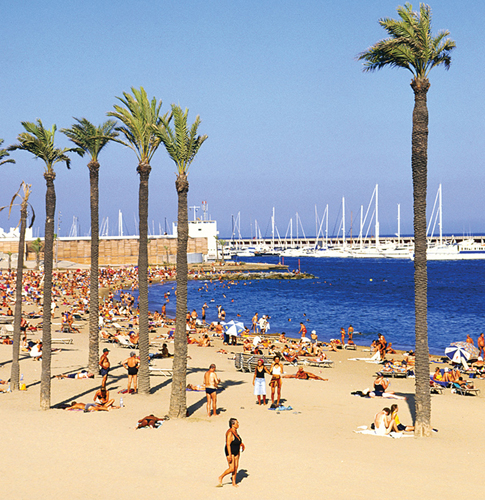
Barceloneta beach
Museu d’Història de Catalunya Housed
in the Palau de Mar, a renovated portside warehouse, this museum offers
a broad, interactive exploration of Catalonia’s history since
prehistoric times. Kids especially will have a ball with the engaging exhibits, such as a Civil
War-era bunker and a recreated Catalan bar from the 1960s with an
ancient futbolín (table football) game. Pl Pau Vila 3, Palau de Mar Open 10am–7pm Tue–Sat (until 8pm Wed), 10am–2:30pm Sun Adm €4, free first Sun of month DA

Museu d’Història de Catalunya
Rambla de Mar Saunter
along the Rambla de Mar, a floating wooden pier that leads to
Mare-magnum, a flashy mall that has many shops, restaurants and bars.
Nearby the giant IMAX® cinema shows 3-D films on mega-screens generally
on nature-, adventure- and sports-related topics. Moll d’EspanyaMaremagnum
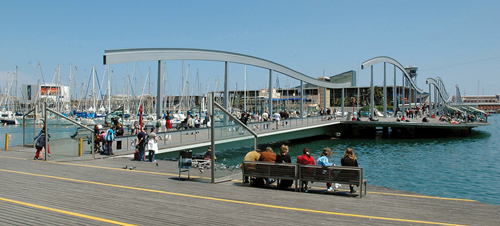
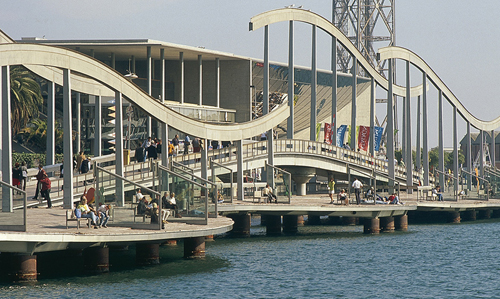
Swing Bridge, between La Rambla & Moll D’Espanya
L’Aquàrium Come
face to face with the marine world of the Mediterranean at Barcelona’s
impressive aquarium, the largest in Europe. The highlight is the 80-m
(262-ft) long underwater tunnel, which has a moving walkway that
transports visitors through the deep blue unknown, while sharks glide
menacingly close. A huge hit with the kids is the new Explora! floor,
with interactive exhibits that allow you to explore the ecosystems of
the Mediterranean.
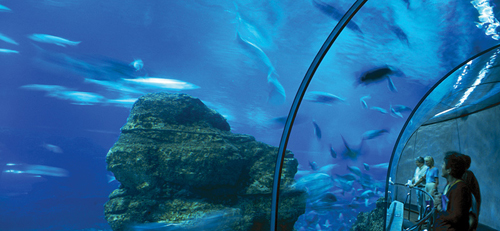
L’Aquàrium
Barceloneta A portside warren of narrow streets, small squares and ancient bars, this traditional neighbourhood of pescadors (fishermen) and mariners
(sailors) seems worlds apart from the megamalls and disco lights of
nearby Port Olímpic. A refreshing foray through this tight-knit
community yields a glimpse into the way Barcelona was 150 years ago.
Older couples still pull chairs out onto the street to gossip and watch
the world go by, and small seafood restaurants serve a menú del dia
of whatever’s fresh off the boat. Running the length of Barceloneta’s
western edge is Passeig Joan de Borbó, which is lined with restaurants
serving mariscs (shellfish) and paellas.
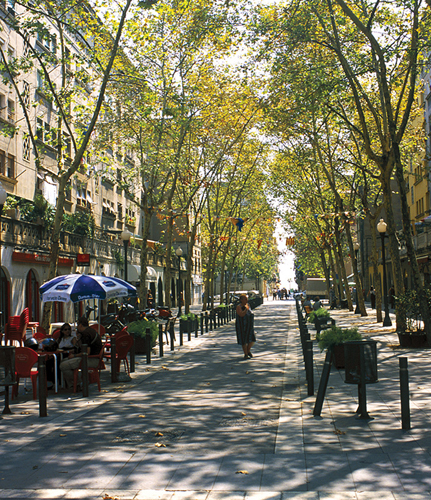
Street scene, Barceloneta
Boat & Cable Car Trips See Barcelona’s port activity from a different perspective, either from the air or the sea. The Transbordador Aeri
cable cars offer sweeping bird’s-eye views of Barcelona and its coast,
while the old-fashioned Les Golondrines boats and the Orsom Catamaran
sweep you around the port area.

Pailebot Santa Eulàlia Bobbing in the water at the Moll de la Fusta (Timber Quay) is this renovated, three-mast schooner, originally christened Carmen Flores.
It first set sail from Spain in 1918. On journeys to Cuba, the ship
used to transport textiles and salt, and return with tobacco, coffee,
cereals and wood. In 1997, the Museu Marítim bought and restored the ship as part of an ongoing project to create a collection of seaworthy historical Catalan vessels. Submarine Ictíneo II In
1859, Catalan Narcís Monturiol invented one of the world’s first
submarines, a replica of which stands on the Moll d’Espanya. Hard to
believe, but in an earlier version of this wooden, fish-shaped
submarine, powered by two internal steam engines, Monturiol made a
number of successful underwater journeys. He invented the submarine as a
means of gathering coral; later, he tried to sell it to the army.
However, he finally sold his invention in parts and died penniless. El Centre de la Vila-Port Olímpic This shopping complex offers a slew of shops, cafés and fast food restaurants. Best of all, it houses the cinemas of the Icària Yelmo Cineplex, one of the largest cinemas in town to show VO (non-dubbed) films.
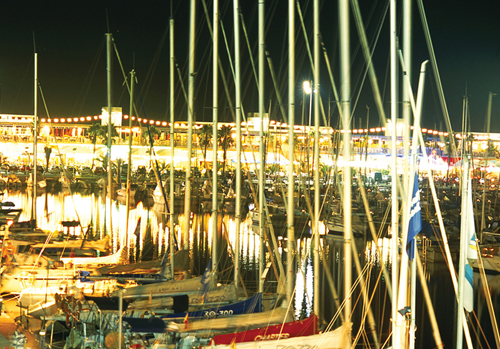
Yachts, Port Olímpic
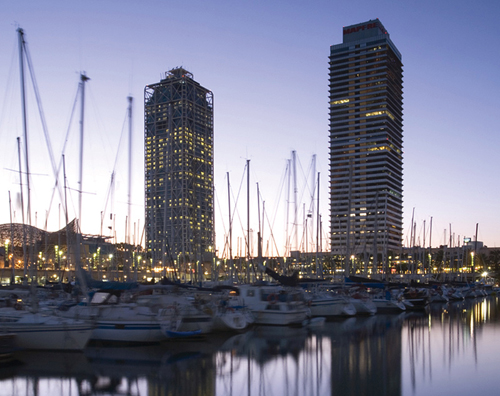
Yachts & skyscrapers, Port Olímpic
World Trade Center This
massive, circular structure is home to offices, convention halls, a
five-star hotel and the top-notch restaurant Ruccula. There are also
several gift shops, including Galería Surrealista, featuring souvenirs
inspired by Dalí and other Surrealists. In the central courtyard is a
“rhythmic” fountain that spurts out streams of water at differing
velocities. Nearby, you can board cable cars and soak up splendid views
from the top of Torre Jaume I.
|